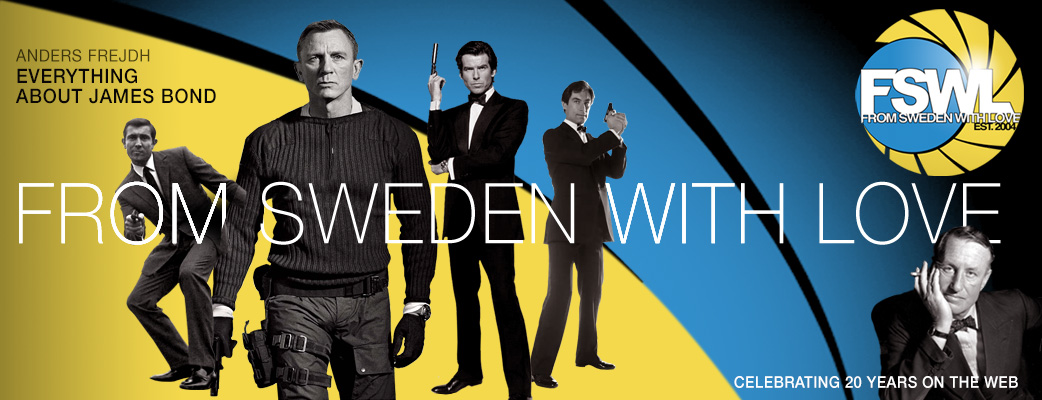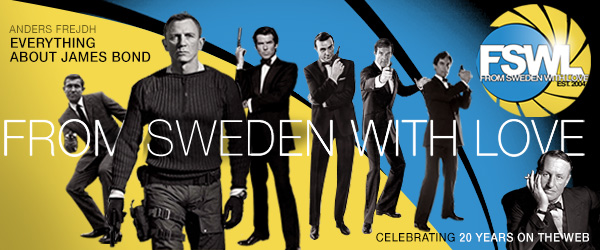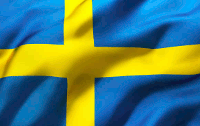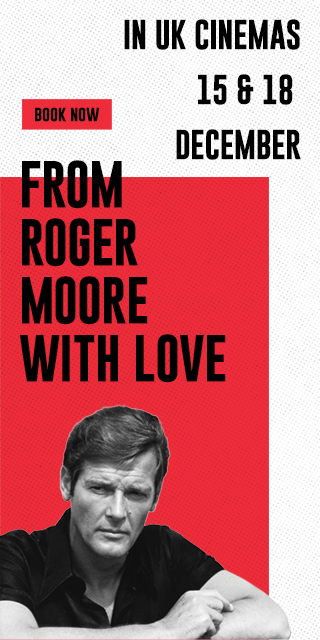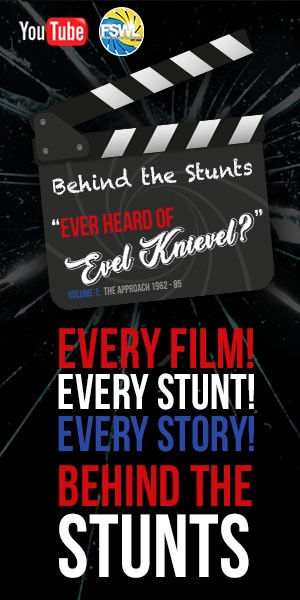Website last updated: 10-6-2025
Home
Competitions
Event
FSWL Merchandise
In Memoriam
Interviews
James Bond 007 articles
James Bond 007 collection
James Bond 007 films
James Bond 007 games
James Bond 007 literature
James Bond 007 news
James Bond 007 products
James Bond 007 shop
James Bond 007 stars
James Bond Fan Clubs
Swedes in the Bond films
Book review: Making Movie Magic written by John Richardson
By: Brian Smith
Published:
2019-12-10
2019-12-10
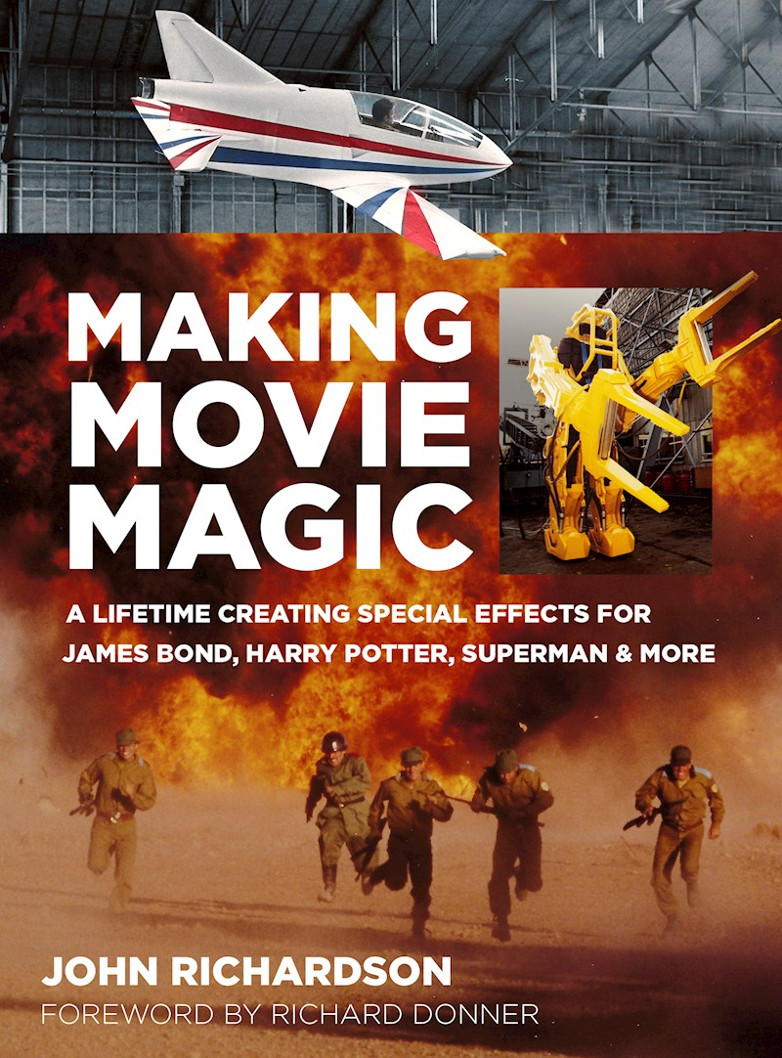
A nine-year old John was granted leave from school to spend three months in Spain while his father worked on ALEXANDER THE GREAT (1956) starring Richard Burton and Claire Bloom. ThereŌĆÖs a lovely photo of his dad and a colleague wrestling with the prop Gordian Knot. A fitting metaphor, if ever there was one, for the solution to the types of work asked of special effects teams. During this decade Richardson Senior was attached to four Warwick pictures for Irving Allen and JohnŌĆÖs future employer, Cubby Broccoli, creating the special effects for PARATROOPER (a.k.a. THE RED BERET), ZARAK, FIRE DOWN BELOW and TANK FORCE, whose U.K. title was NO TIME TO DIE... These pictures took Cliff Richardson to far-flung locations in Morocco, India and Trinidad but, as John notes, he ŌĆścouldnŌĆÖt swing three months off school every year!ŌĆÖ
Frequent visits to the studios where his father created his own brand of effects magic inspired John to follow in his footsteps. His first official job in the film industry was on Otto PremingerŌĆÖs 1960 epic EXODUS. It marked the beginning of a remarkable career. LAWRENCE OF ARABIA and THE 7TH DAWN followed, all before his 17th birthday. He worked with his father on Casino Royale (1967). Among the many effects John conducted were blowing off John HustonŌĆÖs wig during the attack on Sir James BondŌĆÖs mansion, the exploding control desk when Orson Welles as Le Chiffre falls forward having been shot in the head by the Smersh agent, and his personal highlight ŌĆō keeping the bubbles going in Ursula AndressŌĆÖs bath.
JohnŌĆÖs amazing effects work on THE OMEN (1976) for Richard Donner (who pens the bookŌĆÖs Foreword) led to further collaborations with the director, most notably his pioneering work on SUPERMAN (1978) and thus solving the problem of how to believably make a man fly. Most of the effects were done in camera. John relates how he drove a track motorbike through a wheat field with young Clark Kent (Jeff East) attached on a foot plate and harness to create the scene where the hero runs at super-speed through the field. John provides an amazing insight into the effects of this seminal superhero movie.
With his reputation in the movie industry assured, James Bond beckoned. A year after SUPERMAN John was invited to work on Moonraker (1979), the beginning of an eight-picture association with Eon Productions. He headed up the special effects for Octopussy (1983) and A View to a Kill (1985) and the visual effects for The Living Daylights (1987) and Licence to Kill (1989). On OCTOPUSSY he convinced the audience that BondŌĆÖs Bede Jet really did fly through the hanger, and worked on a diverse array of effects, large and small; everything from set pieces such as Bond driving the Mercedes on the railway line chasing a train, to QŌĆÖs magic rope trick. On THE LIVING DAYLIGHTS John had to come up with a solution to the land rover driving off the Rock of Gibraltar. In my opinion, JohnŌĆÖs best work in the Bond series is on this film. The Afghan Mujahedeen retreat, filmed on a real bridge in Morocco with a foreground miniature, which is then blown up as a model back at Pinewood Studios, is seamless on screen and just as impressive today as it was in 1987. Between Bonds, John was the special effects supervisor on ALIENS for which he deservedly won a BAFTA and an Oscar┬«.
John returned to do the miniatures on Tomorrow Never Dies (1997) and The World Is Not Enough (1999) and was the model effects supervisor for Die Another Day (2002).
Perhaps John RichardsonŌĆÖs greatest body of work was on all eight of the Harry Potter films. Not only did he create so many wonderful and believable effects over his ten year association with the series, beyond that he was involved in turning Leavesden (the former Rolls Royce factory initially converted to accommodate the 1995 Bond film GOLDENEYE) into a permanent studio for Warner Brothers and the huge Studio Tour and Harry Potter exhibition, which is one of LondonŌĆÖs biggest tourist attractions.
The book is wonderfully illustrated with over 200 photographs (although I would like to have seen more of them captioned) most of which come from JohnŌĆÖs personal collection, and over 60 colour pages of film posters. Ably assisted by his co-author Gareth Owen, JohnŌĆÖs wry sense of humour shines through as he concocts the perfect blend of autobiography and behind-the-scenes storytelling.
Making Movie Magic is a magic movie-making book and my favourite read of the year.
Review by Brian James Smith. Copyright ┬® 2019 From Sweden with Love. All rights reserved.
>Order the hardback edition from Amazon UK
Tags:
#biographies
#brian_james_smith
#film_books
#john_richardson
#reviews
#the_history_press
Tweet
